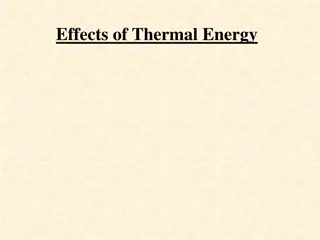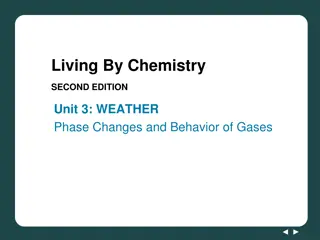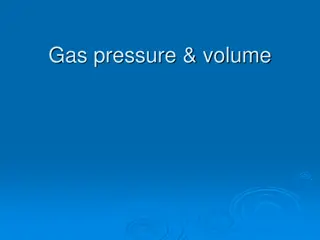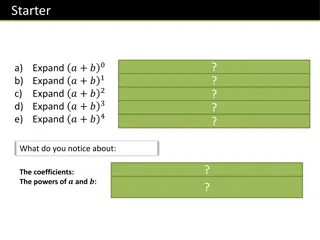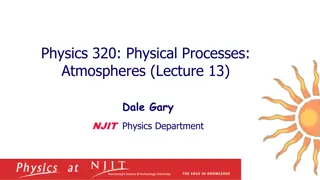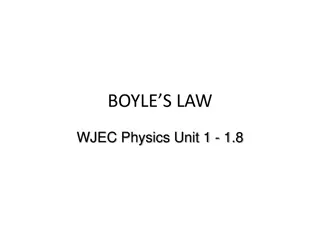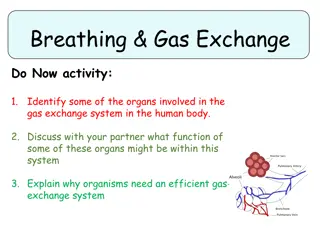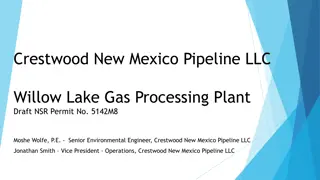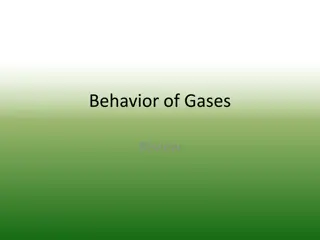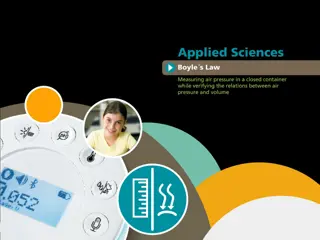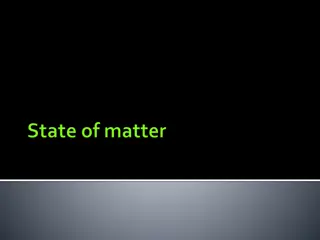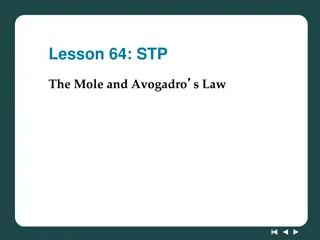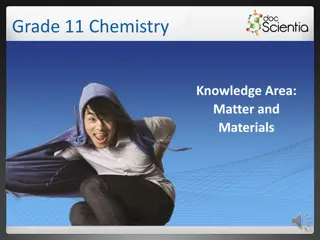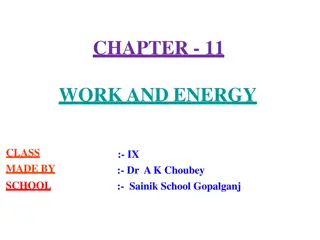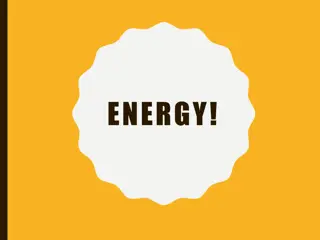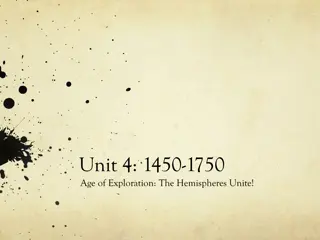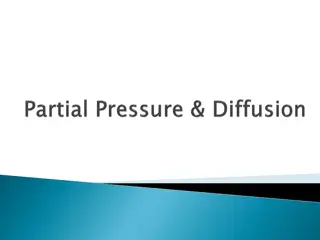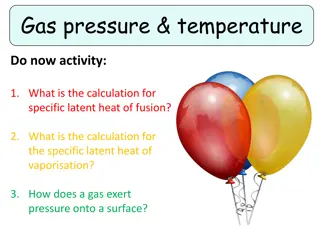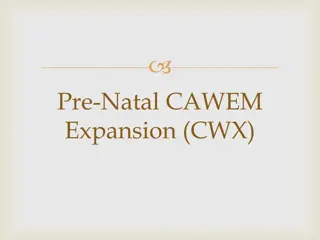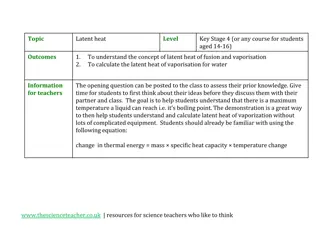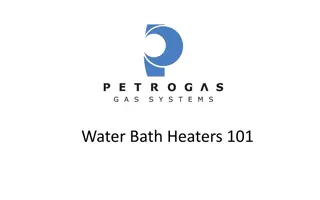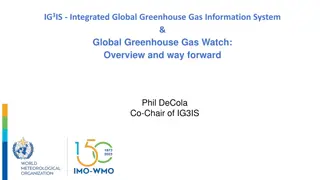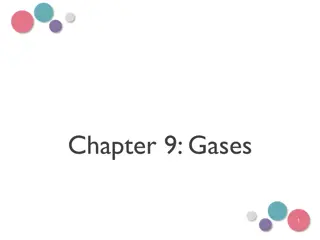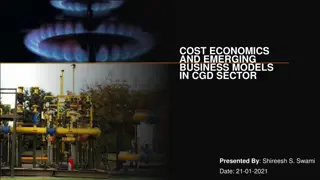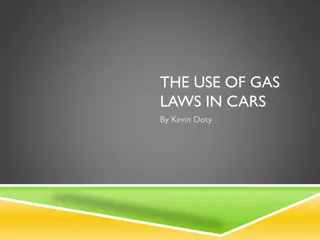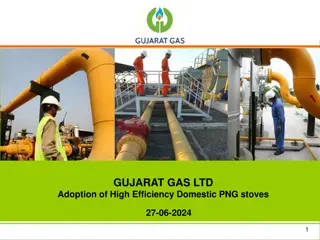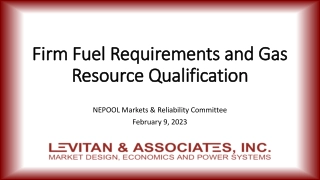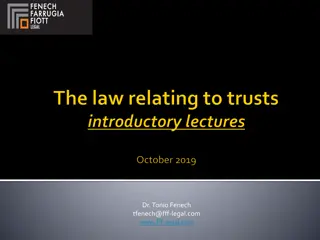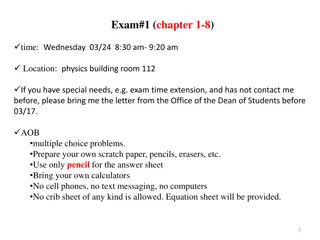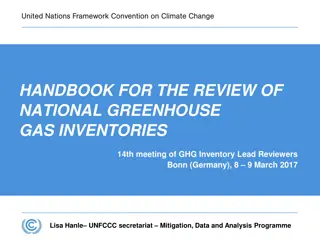Understanding Joule's Law and Gas Expansion Processes
Joule's Law states that the energy of a gas is solely dependent on temperature, not volume. This law is discussed along with differences between reversible and irreversible work, as well as isothermal and adiabatic processes. The measurements and interpretations concerning the law are explored, highlighting the ideal gas behavior versus real gases' limitations.
Download Presentation

Please find below an Image/Link to download the presentation.
The content on the website is provided AS IS for your information and personal use only. It may not be sold, licensed, or shared on other websites without obtaining consent from the author. Download presentation by click this link. If you encounter any issues during the download, it is possible that the publisher has removed the file from their server.
E N D
Presentation Transcript
JOULES LAW Name of the instructor : U.Nithya M.Sc.,M.Phil.,
Difference between reversible and irreversible work of expansion of an ideal gas:- S.no S.no Reversible Reversible Irreversible Irreversible 1 Work obtainable will be maximum Will not be maximum 2. Very slow Proceeds in a measurable rate
Differences between isothermal and adiabatic Processes: Property Property Isothermal process Isothermal process Adiabatic process Adiabatic process Temperature Constant Changes Heat change Q=W,varies with nature of process E =0, does not vary with nature of process H = 0,does not vary with nature of process More Q=o,varies with nature of the process. E = - W = - Cv T varies withnature of process H = Cp T varies with nature of Process. Less E H Final pressure Final volume More Less W More Less
JOULES LAW: law: The energy of the gas is a function of temperature only. It is independent of volume.The law may be represented mathematically As follows ( E/ v)T= 0
InterPretation of the exeriment: no work is produced .w=0 this is called free expansion of the gas. First law dE = q-w w=0 dE = q The temperature of the surroundings is unchanged q=0, hence dE=0 We know dE = ( E/ T )vdT+ ( E/ v)Tdv. ------------------ 1 The system and water are in thermal equilibrium,the temperature of the system is also unchanged. So equation 1 becomes. dE=( E/ v)Tdv =0 dv#0, ( E/ v)T=0
This means that the energy is independent of the volume. This means that the energy of the gas is a function of temperature only. This is called joule s law. Limitations: Joule s law is not precisely correct for real gases. The ideal gas obeys joule s law exactly.
Joule thomson effect:- Definition: When a gas is made to expend adiabatically from a region of high pressure to a region of low pressure the temperature of gas changes. This phenomenon is called Joule thomson effect. Explanation: if a stream of gas at high Pressure is allowed to expand by passing it through a porous plug into vaccum or low pressure,under adiabatic conditions the temperature of the gas changes appreciably. All the gases expect hydrogen and heliumwere cooled when they were subjected to joule thomson effect. Helium and hydrogen Were heated under similar circumtances.
Limitations: joule thomson effect can be applied only if the initial temperature of the gas is below its inversion temperature. INVERSION TEMPERATURE: Definition: The temperature below which joule-thomson effect is a cooling effect is called inversion temperature. The temperature below which a gas gets cooled during an adiabatic expansion is known as its inversion temperature. Explanation with example: * When a gas is subjected to joule thomson effect it gets cooled appreciably. * when hydrogen and helium were subjected to joule thomson effect they were heated up instead of getting cooled. * At very low temperature these gases also get cooled.
* For example hydrogen below -80c and helium below -240c behaved like this. * There is a particular temperature below which the joule thomson effect is always a cooling effect. * This temperature is called the inversion temperature of that gas. Joule thomson s experiment: The experiment devised by joule and thomson to derive a relation between the lowering of temperature and the fall of pressure of a gas due to exansion is given systematically.
Net workdone on the gas at high pressure = -P1V1 Workdone by the gas at low pressure = P 2V2 Net workdone by the gas = P2V2 P1V1 This expansion of the gas taken place adiabatically. There will be a fall in E from E1and E2. P2V2 P1V1= E1- E2 E2.+ P2V2 = E1+ P1V1 E +PV. = H H2. = H1 Or. H. = 0 joule thomson expansion is an isenthalpic process adiabatic expansion of a real gas occurs at constant enthalpy.



